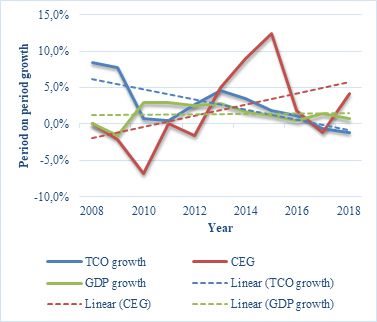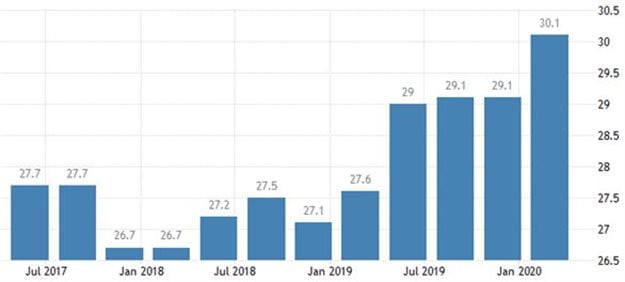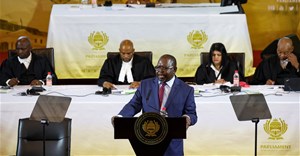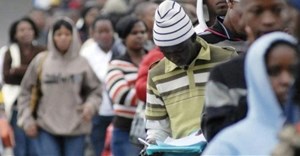Trending
Elections 2024
Jobs
- Senior Professional Officer Cape Town
- Project Administrator Johannesburg
- Junior Mechanical Engineer Randburg
- Electrician - Electrical Reticulation Experience George
- Electrician George
- Electrical Engineer George
- Expression of Interest for A Panel OF Qualifications Evaluators Pretoria
Government should pay people to dig holes and then fill them

The social and economic challenges stemming from the Covid-19 pandemic are becoming clear and have accentuated the perpetual decline in growth that the built environment sector has been experiencing over the past decade. This is a complex situation that demands that all stakeholders in the sector must work more closely together than ever before. All stakeholders in the sector must lead where they can. Rather than stand on the sidelines as spectators of the bloodbath of job losses, this is the time when all stakeholders must rise up to the challenge and lend support where possible and provide signposts to others better placed to help.
No-one can claim to be knowledgeable of a meticulous course of action as different economies navigate their way out of the economic dire straits that the Covid-19 pandemic has created. The consideration of all voices that matter is a significant imperative as difficult decisions are made. Those making the decisions need to show empathy for all communities. More so, for those in society whose lives may have been turned upside down by the pandemic. Before the Covid-19 pandemic hit our shores early this year, a number of communities in South Africa were already in distress. In a majority of municipalities, most citizens were facing significant challenges of poverty, inequality, spatial separation of residential areas from economic opportunities and informal settlements that lacked basic infrastructure to sustain human life. These conditions have worsened as a result of the Covid-19 pandemic.

The unexpected outbreak of the Covid-19 pandemic in South Africa happened at a time when the built environment sector was already going through a challenging economic time since 2008. The sector’s contribution to the nation’s GDP has dwindled considerably over the past decade as illustrated in the analysis of the trends in total construction output (TCO), construction employment (CE) and GDP growth illustrated herewith. This has had a direct, negative impact on the ability of the sector to absorb skills supplied by higher education institutions every year, resulting in the consistent declining trend in CE over a decade since 2008. Over the same period, the picture that emerges from the analysis is that the built environment sector, as represented by the TCO, has experienced consistent declining growth.
Is the built environment sector in a knife edge?
By the end of 2019, the built environment sector was already laden with bad debts that were putting most contractors and professional practices in significant financial distress. The Covid-19 pandemic has exacerbated the situation. The unemployment trends depicted hereunder suggest that by the first quarter of this year, SA was already experiencing a Great Depression level of unemployment. While the full extent of the impact of Covid-19 on the built environment sector cannot be fully estimated at this stage, the sector has already seen several large professional practices and construction firms either filing for bankruptcy or de-investing. The question is, how quickly can the sector recover? Apparently, what happens in the built environment sector has a lot to do with what happens in the mainstream economy.

As in the built environment sector, the picture that emerges here is an increasing trend in SA’s overall unemployment rate over the past three years. It rose to 30.1% in the first quarter of 2020 from 29.1% in the previous period, which was above the market expectations of 29.7%. This is the highest jobless rate on record since quarterly data from Stats SA became available in 2008. What are the prospects for the built environment sector?
If we could get the Covid-19 pandemic under control, recovery could be rapid in the built environment sector, and not without reason. The analysis of annual change in TCO, CE and GDP illustrated above suggest that there is a link between TCO growth and CE growth. When there is growth in TCO, CE grows at a faster rate. When there is a decline in TCO growth, CE growth also declines and this tends to occur at a faster rate. While growth in the built environment sector is shown to follow growth in the national economy at some points in the time series, growth in the built environment sector also happens despite a decrease in national economic growth at certain points in the time series.
We all have spent the past four months pondering on what the Covid-19 pandemic means for the built environment sector. There is a great deal of interest in the role of the built environment sector in economic growth. Since the pioneering work of Keynes in 19362, much attention has been paid to the role of the built environment sector in the national economy. Increases in infrastructure spending in SA since 2003 saw a steady increase in the number of jobs created, as well as skills shortages that accompanied such increases. These increases in infrastructure development came as a result of government’s increased expenditure, largely driven by large state-owned enterprises (SOEs) such as Eskom, Transnet and Sanral. Infrastructure developments that accompanied the hosting of the 2010 FIFA World Cup also played a significant role in driving up demand in the built environment sector (Dlamini and Root 2019).
The Covid-19 crisis is having a devastating impact on the built environment sector and creating uncertainty that could last for many years. It has made it the preoccupation of every government to explore the minimum necessary and sufficient conditions for economic recovery post this period. Economic growth and employment creation in SA have become the preoccupation of every government department over the past two and a half decades since the 1994 dawn of democracy. The challenge has been to create an economic and socio-political environment where citizens would have access to jobs and enterprise opportunities.
How quickly can the built environment sector recover?
Growth theory offers contradictory projections of whether an influenza pandemic and the accompanying obstructive shock to the population and the labour force, should increase or decrease the rate of growth of output per capita over the medium and long run. This research has so far revealed that the only impact of the Covid-19 pandemic is an initial shock to the population. While a significant obstructive shock to the population and the labour force is imminent post the Covid-19 pandemic, there is also a compelling argument to believe that such shocks will impact negatively on economic growth in the long run. Limitations in terms of data that is currently available make it difficult to estimate the full extent of the impact of the pandemic on the built infrastructure sector.
The sheer size and role of the built infrastructure sector in economic recovery is too important to ignore. It accounts for about 15% of the GDP of most developing countries and approximately 50% of gross fixed capital formation. It stands to reason that any sector of the economy this big cannot but have an impact on economic recovery. Growth theory shows that infrastructure influences investment, which is a major factor in the determination of economic growth. As South Africa navigates its way out of the economic quagmire, three economic recovery strategies are essential for the built environment sector. First, eliminate all inefficiencies arising from poor infrastructure. Second, immediately reactivate all infrastructure projects that were interrupted by the outbreak of Covid-19. Third, prioritise and commission all identified strategic infrastructure projects.

The strategies outlined above present a unique opportunity for the South African government to accelerate the much-needed economic recovery going forward. Increased demand for construction inputs such as cement and steel will influence investment in other sectors of the economy, such as the manufacturing sector. Infrastructure facilities are wanted, not for their own sake, but on account of the goods and services which they create. Hence infrastructure such as roads and factory buildings are considered as investment goods because they are used to create other commodities. Good transport infrastructure and the availability of factories attract investment into other sectors of the economy.
What are the impediments?
The world is changing rapidly, in ways that leave many people behind. The advent of the Covid-19 pandemic has accelerated this change in ways that are compelling businesses in particular and society in general to rethink their ways of doing things. We have entered a new era which very clearly calls for a different calibre of professionals in the built environment space. Those who belong to the old school of professionals must acquire an understanding of the new brand or be relegated to the rank and file.
There is now a great deal of emphasis on occupational health and safety issues in the rollout processes of infrastructure projects. While a lot has been said about how dangerous the built environment sector is, this should be viewed as an opportunity to create smart jobs that create a sustained socioeconomic developmental agenda, while producing the infrastructure facilities that add to our productivity and to the quality of life. Given the poor record of health and safety in construction, the opportunity now exists for these to be elevated to the fore as matters of humanitarian significance. Potential risks and uncertainties that might inhibit innovation and the pioneering of new approaches to infrastructure development must be dealt with in the preliminary stages of project procurement.
Conclusively, while this article may arguably paint a picture of distress and uncertainty, it is imperative to remain hopeful and optimistic of the possibilities. I have a greatly enlarged vision of such possibilities relating to the built environment sector post the Covid-19 pandemic and not without reason. The development of sustainable infrastructure is central to the competitive performance of South Africa’s industrial, technological and commercial base. It impacts on every aspect of the realisation of sustainable human settlements and the creation of sustainable infrastructure that supports economic growth while producing the structures that add to our productivity and the creation of a better life for all.
1. Dlamini, S.S. and Root, D. (2019). The nexus of the infrastructure sector, employment and economic growth. West Africa Built Environment Research Conference, 1101-1115
2. Keynes, J. M. (2007). The general theory of employment, interest and money. Basingstoke: Pelgrave
Macmillan.














